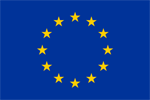Innovative Educational Technologies, Tools and Methods for E-learning
Scientific Editor Eugenia Smyrnova-Trybulska
“E-learning”, 12, Katowice–Cieszyn 2020, pp. 195–206
DOI: 10.34916/el.2020.12.17
VISUAL LITERACY IN CONTEMPORARY CULTURE – COMPARATIVE RESEARCH
Małgorzata Wieczorek-Tomaszewska, Bibliotheca Nostra, Akademia Wychowania Fizycznego im. Jerzego Kukuczki w Katowicach m.wieczorek.tomaszewska@gmail.com, ORCID 0000-0002-7493-4071
Abstract: In the paper, the author presents the results of comparative research conducted in the academic environment of Poland and Italy, the aim of which was to diagnose the state of knowledge and skills in the field of visual competences. Visual
competences are the subject of education in the form of comprehensive literacy containing both aspects of visuality – knowledge of the image as a mental object and knowledge of the form that determines the shape and structure of the record, as well as informational conditions for the creation, retrieval, dissemination, collection and use of visual content. The cultural perspective of the conducted research on the level of visual literacy, which determines active visual communication, is closely related to the past, the pictorial and audiovisual civilization formation of the past, and the digital media of the present
time. Contemporary communication is transforming and requires information competences. Visual reading and writing skills provide tools for the understanding and contextual analysis of cultural space in a pictorial aspect. The skills are based on intellectual, aesthetic, ethical and technological qualifications acquired through literacy.
Keywords: visual literacy, visual communication, visual competence, visual culture, comparative research.
REFERENCES
B a b b i e, E. (2006). Badania społeczne w praktyce [Social research in practice]. Wydaw. Naukowe PWN, Warszawa.
B e l k e, B., L e d e r, H. (2001). Annahmen eines Modells der ästhetischen Erfahrung aus kognitionspsychologischer Perspektive [Assumptions of a model of aesthetic experience from a cognitive psychological perspective]. Retrieved from http://www .sfb626.de/veroeffe ntlichungen/online/aesth_erfahrung/aufsaetze/ belke_leder.pdf (accesed 27 February 2020).
B r a d e n, R. A. (2001). Visual Literacy. The Association for Educational Communications and Technology. Retrieved from http://learngen.org/~aust/EdTecheBooks/AECT_HANDBOOK96/16/index.html (accessed 20 February 2019).
C a s s i d y, M. F., K n o w l t o n, J. Q. (1983). A Visual Literacy: A Failed Metaphor? Education Communication and Technology Journal, Summer, 31(2). Springer.
Cyfrowa przyszłość. Katalog kompetencji informacyjnych [Digital future. Catalog of information competences] (2013). Retrieved from http://cyfrowaprzyszlosc.pl/katalog-kompetencji/ (accessed 16 July 2013).
D e b e s, J. (1969). What is „Visual Literacy? Retrieved from http://www.ivla.org/org_what_vis_lit.html (accessed 17 February 2020).
D e w e y, J. (1975). Sztuka jako doświadczenie [Art as experience]. Ossolineum, Wrocław.
D o n d i s, D. A. (1973). A Primer of Visual Literacy. The MIT Press, Cambridge, Mass.
D y l a k, S. (2012). Alfabetyzacja wizualna jako kompetencja współczesnego człowieka [Visual literacy as a competency of modern man]. In Dylak, S., Skrzydlewski, W. (2012). [Media. Education. Culture. Towards media education. Polish Society of Educational Technology and Media] (2012). Poznań.
K ę b ł o w s k i, K. (1973). Klasyfikacja sztuk pięknych [Classification of fine arts]. In Skubiszewski, P. (Ed.). Wstęp do historii sztuki [Introduction to the history of art]. PWN, Warszawa, p. 69–106.
K m i t a, J. (1982). O kulturze symbolicznej [About symbolic culture]. Centralny Ośrodek Metodyki Upowszechniania Kultury [Central Center for Methodology of Popularizing Culture]. Warszawa.
M o r a w s k i, S. (1988). Pojmowanie dzieła sztuki dawniej i dzisiaj [Understanding a work of art in the past and today]. In Na zakręcie do sztuki do po-sztuki [On the curve from art to post-art]. Kraków, p. 177.
P a n o f s k y, E. (1971). Ikonografia i ikonologia [Iconography and iconology]. In Studia z historii sztuki [Studies in art history]. Oprac. J. Białostocki. PIW, Warszawa.
P a t e r – E j g i e r d, N., (2010). Kultura wizualna a edukacja [Visual Culture and Education]. Fundacja Tranzyt-Poznań.
P i l c h, T. (1995). Zasady badań pedagogicznych [Principles of pedagogical research]. Warszawa, p. 42.
R o c k e r z b a c h, B., F a b i a n, C. A. (2008). Visual Literacy in the Age of Participation. Retrieved from http://www.artstor.org/news/n-pdf/research-fabian-vra-2008.pdf (accessed 30 March 2020).
T a t a r k i e w i c z, W. (1973). Definicja sztuki [Definition of art]. In Wstęp do historii sztuki. Przedmiot – metodologia – zawód [Introduction to the history of art. Subject – methodology – profession]. PWN, Warszawa, p. 17–49.
Visual Literacy Competency Standards for Higher Education (2011). ACRL, Chicago. Retrieved from http://www.ala.org/acrl/standards/visualliteracy (accessed 30 March 2020).
W i e c z o r e k – T o m a s z e w s k a, M. (2014). Reception of ‚Visual Literacy Competency for Higher Education‘ (ERIC, 2011) in the Polish education system. In E. Smyrnova-Trybulska (Ed.). E-learning and Intercultural Competences Development in Different Countries. Katowice–Cieszyn, STUDIO NOA, pp. 111–123.
W i l k o w s k i, M. (2013). Wprowadzenie do historii cyfrowej [Introduction to digital history] Instytut Kultury Miejskiej [City Culture Institute]. Gdańsk. Retrieved from http://historiacyfrowa.ikm.gda.pl/ (accessed 16 July 2019).





